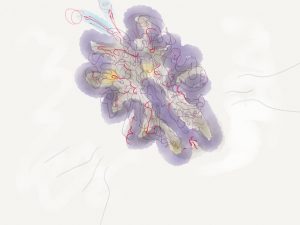 I snipped the quotes below from Chris Corrigan back in December (Some things that work in real reconciliation dialogue – Chris Corrigan ), meaning to write more about it. I think it is too important to wait for my “round to it” to happen, so here it is. Chris is writing about reconciliation. In our current political environment (especially here in the US) this is becoming a core competency, and can’t be left to luxury. The BOLDING is mine, with comments between points.
I snipped the quotes below from Chris Corrigan back in December (Some things that work in real reconciliation dialogue – Chris Corrigan ), meaning to write more about it. I think it is too important to wait for my “round to it” to happen, so here it is. Chris is writing about reconciliation. In our current political environment (especially here in the US) this is becoming a core competency, and can’t be left to luxury. The BOLDING is mine, with comments between points.
Very small groups – no more than four at a table – meant that there was no need for people to “take their best shot” as they would have in a larger plenary format. Groups smaller than five reduce the performative nature of conversation and allow dialogue to fully unfold.
This is where I constantly get push back from convenors and people in authority. They want whole group for fear of missing out on something, or having something happen that they can’t see/control. Working with positional leaders to move past these fears is important prep work, and resisting their urge to derail small group practices mid-stream.
The questions for the dialogue were very broad. Sometimes the most powerful question is “what are you thinking and feeling about what you just heard?”
This was interesting to me as part of me seems to push for sharper, focused questions. I think I have been confusing sharpness and focus. Broad questions can have the stimulating characteristics of broad questions. Or maybe it is the invitation process (see next point.) I clearly have more thinking/learning to do here.
The invitation process is everything. We helped our client design an invitation process but she took the lead in going to each group separately and talking to them about why they were needed in the conversation.
The practice of “everything from the front of the room to all groups” had not been working for me so I’ve started to encourage very broad instructions at the front, then travel to each table/group. People use their questions to me to sharpen their own thinking and understanding. It is far less passive than just waiting for instructions!
There were no observers. Everyone in the room was at a table except for me and our graphic recorder. Everyone at a table had a question they needed answered or a curiosity about the outcome.
I just say, “Amen!”
There was no certainty in the room, no positionality, and yet, each person spoke about their own experience and their own perspective and listened carefully to what others said.
It was interesting to see Chris put certainty and positionality in the same sentence. Chris, was there a reason?
… everyone in the room had to stretch their perspectives to participate. This was not comfortable for anyone, because this work isn’t comfortable for anyone. It is literally unsettling. …there is a tremendous amount of emotional labour involved in talking about traumatizing history.
Here is the other area I need to learn a LOT more about. It goes to the whole other side of preparation, including self awareness and my own power and how I do or do not use it.
What are your practices for context setting and facilitating for reconciliation?